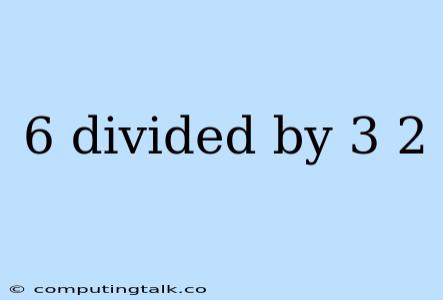The phrase "6 divided by 3 2" is a bit ambiguous, as it could be interpreted in a couple of ways. It's important to understand the order of operations to correctly solve this.
Understanding Order of Operations
In mathematics, we follow the order of operations, often remembered by the acronym PEMDAS or BODMAS:
- Parentheses ( Brackets)
- Exponents ( Orders)
- Multiplication and Division (from left to right)
- Addition and Subtraction (from left to right)
Possible Interpretations
1. "6 divided by (3 multiplied by 2)"
If the intent is to multiply 3 by 2 first, then divide 6 by the product, the equation would look like this:
- 6 ÷ (3 × 2)
- 6 ÷ 6 = 1
2. "(6 divided by 3) multiplied by 2"
If the intent is to divide 6 by 3 first, then multiply the result by 2, the equation would look like this:
- (6 ÷ 3) × 2
- 2 × 2 = 4
How to Avoid Ambiguity
To avoid confusion, it's best to use parentheses to clearly indicate the order of operations. For example:
- 6 ÷ (3 × 2) or (6 ÷ 3) × 2
Conclusion
Depending on the intended order of operations, "6 divided by 3 2" could either equal 1 or 4. It's crucial to understand the order of operations to ensure you're solving the problem correctly. Always use parentheses to clarify the order of operations when writing mathematical expressions.
